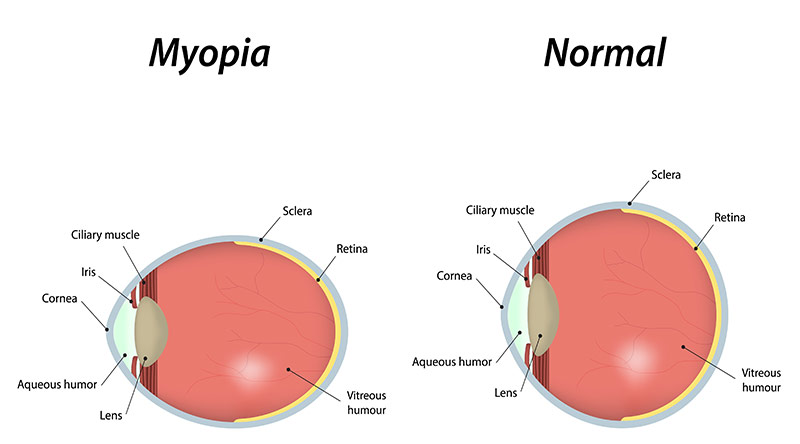
Nearsightedness (Myopia)
Nearsightedness, or myopia, is a vision condition in which near objects are seen clearly, but distant objects do not come into proper focus. It is a very common condition that affects nearly 30 percent of the Canadian population. It normally occurs in school age children, before the individual reaches the age of 20.
Why does myopia occur?
When your eyeball is too long or the cornea has too much curvature, light entering the eye is not focused properly on the retina – the sensory layer – inside the eye. Myopia may be hereditary or it may occur spontaneously.
Will I have to wear glasses or contact lenses?
You may need to wear glasses part-time or full-time to enable you to see more clearly. Eyeglasses, contact lenses, or laser vision correction optically correct the problem by altering the way light enters your eye, but they do not cure nearsightedness. At present, there are no proven cures for nearsightedness.
How is myopia diagnosed?
People with myopia will often have trouble seeing the whiteboard, the movie screen, the television set or other distant objects. When you come for your comprehensive eye examination, Dr. Dubé will include tests to determine if there is a prescription for myopia.

Comments closed
No comments. Leave first!